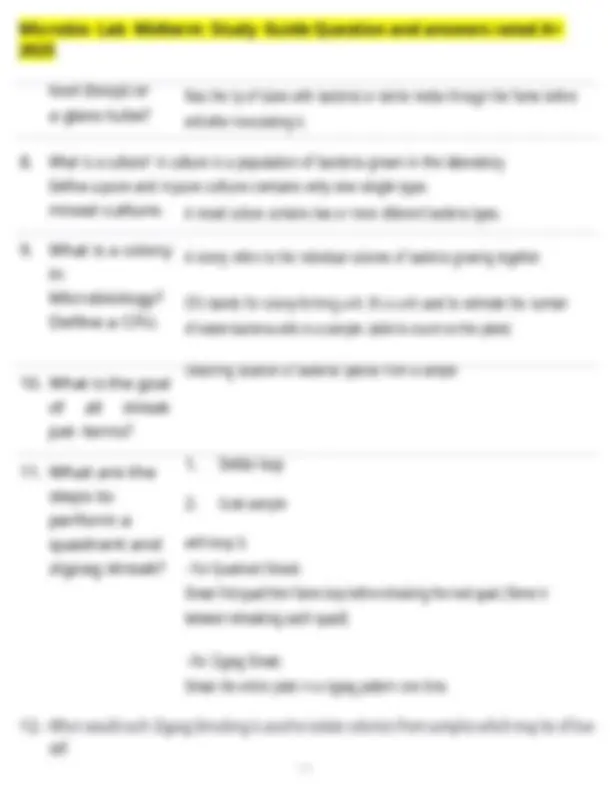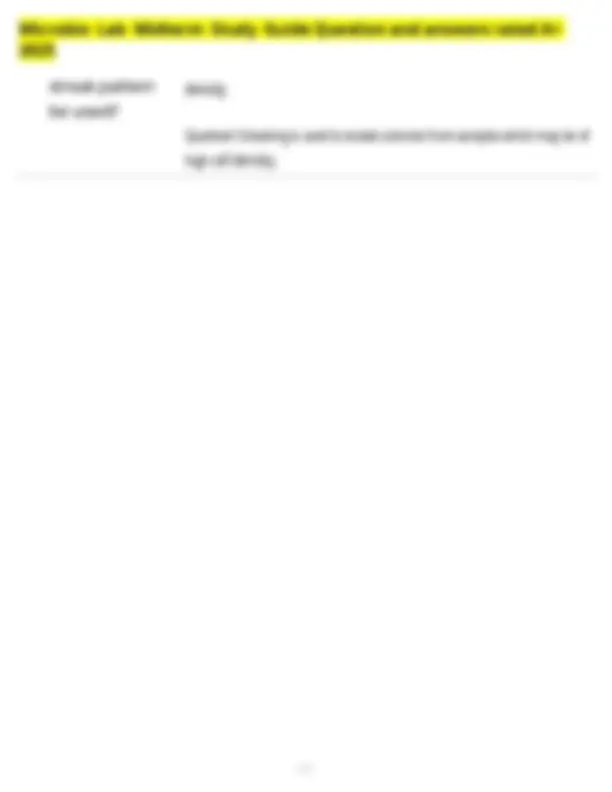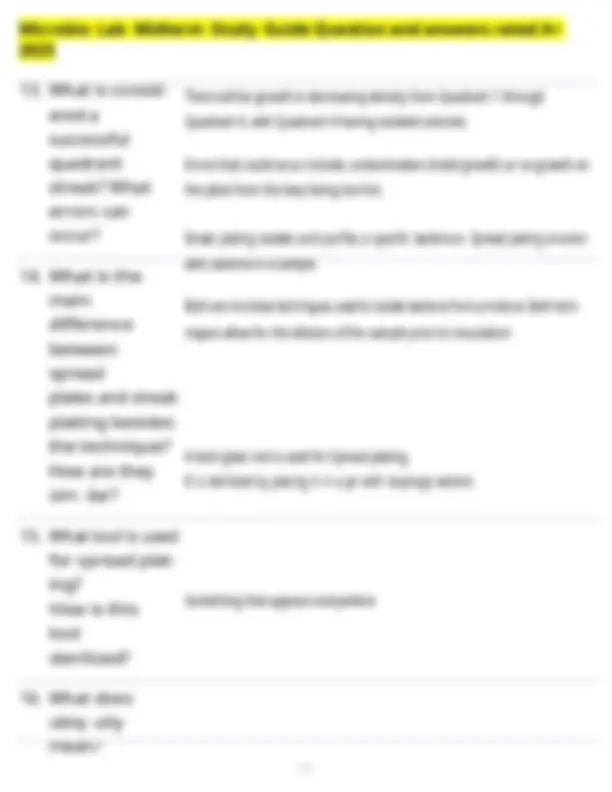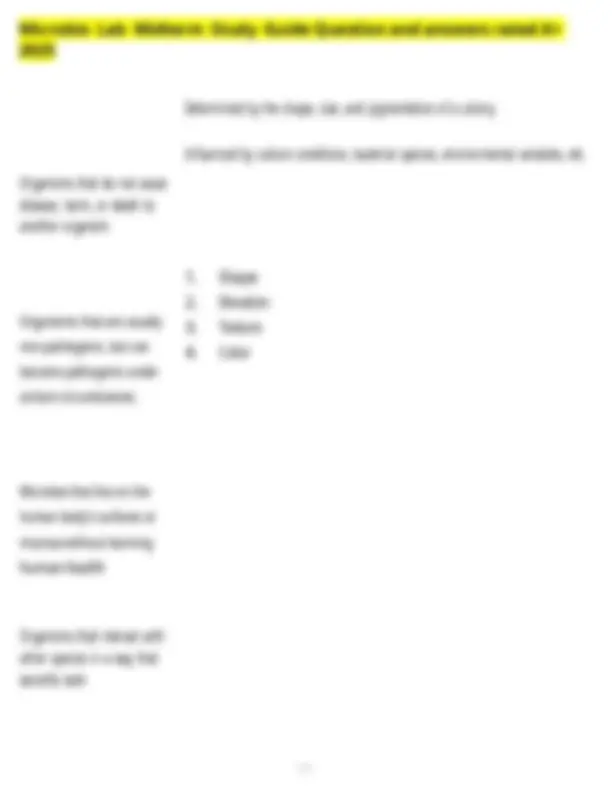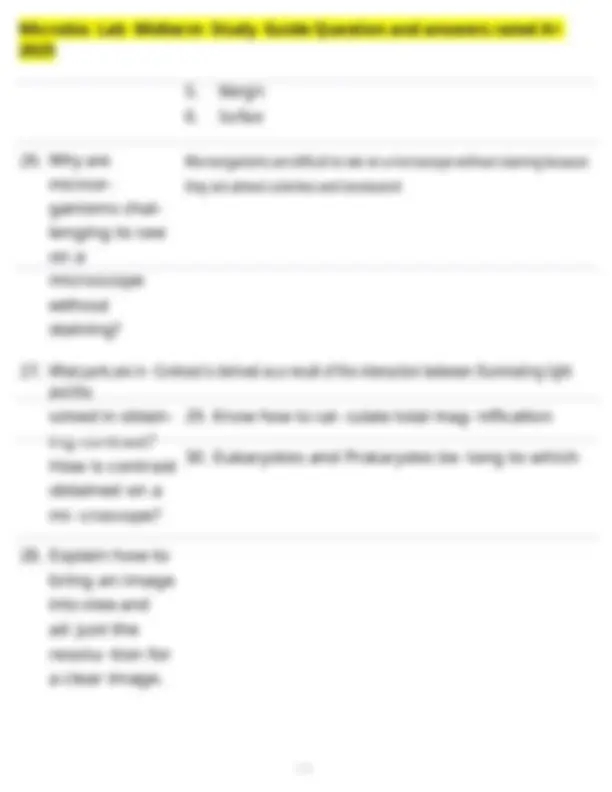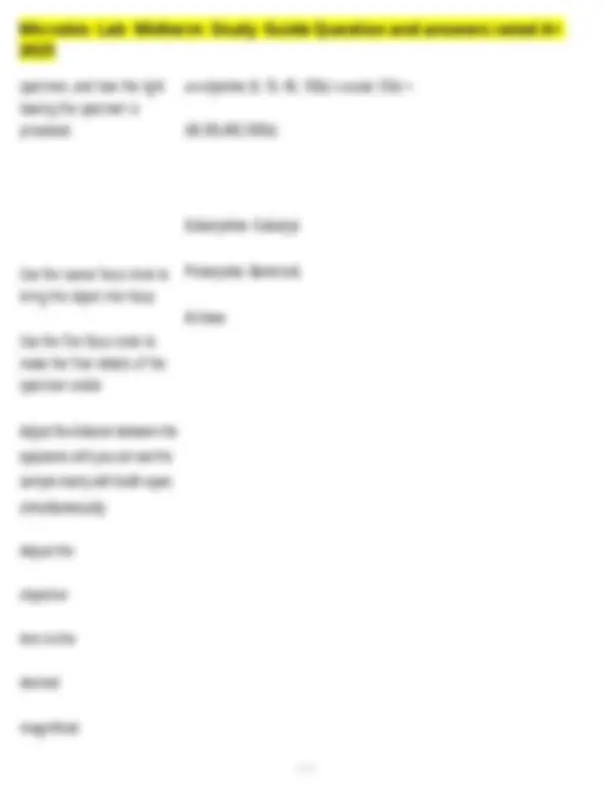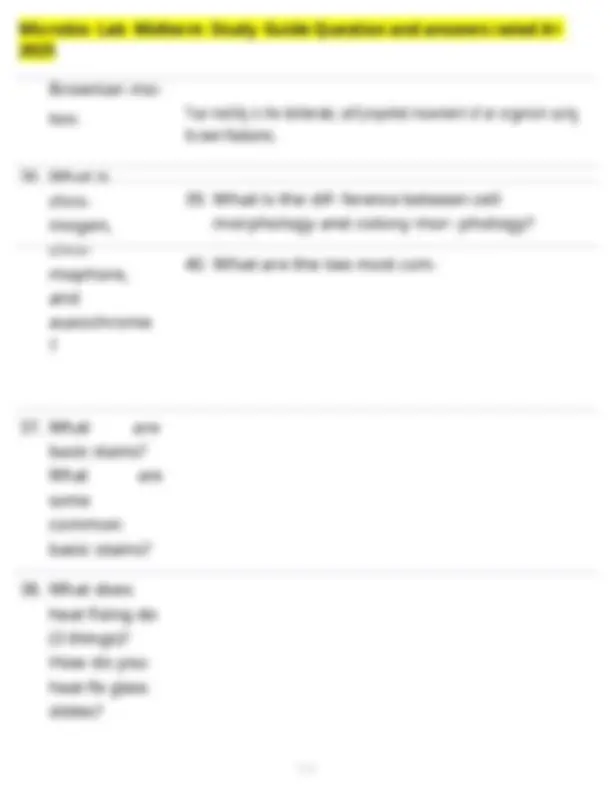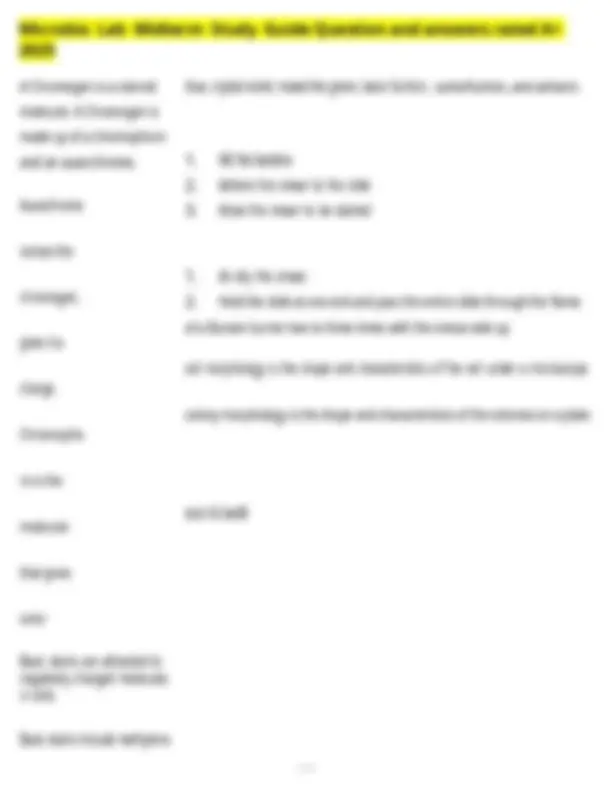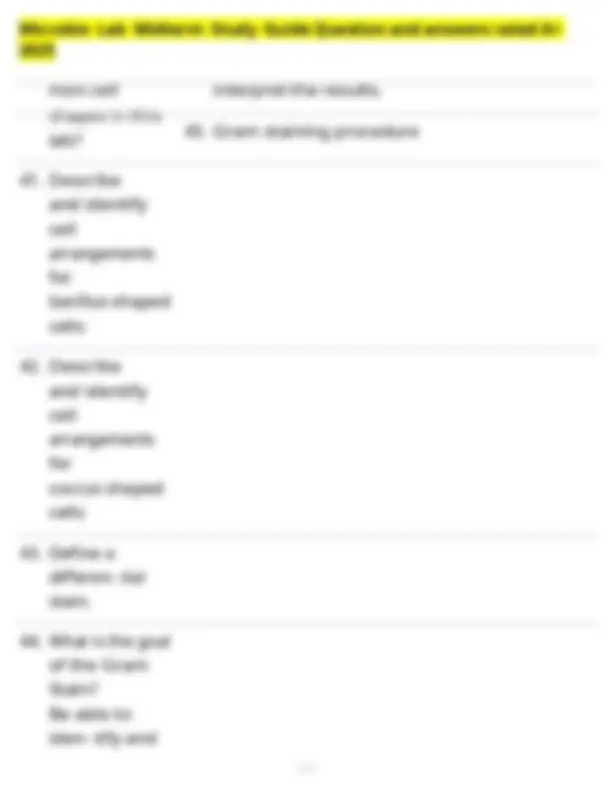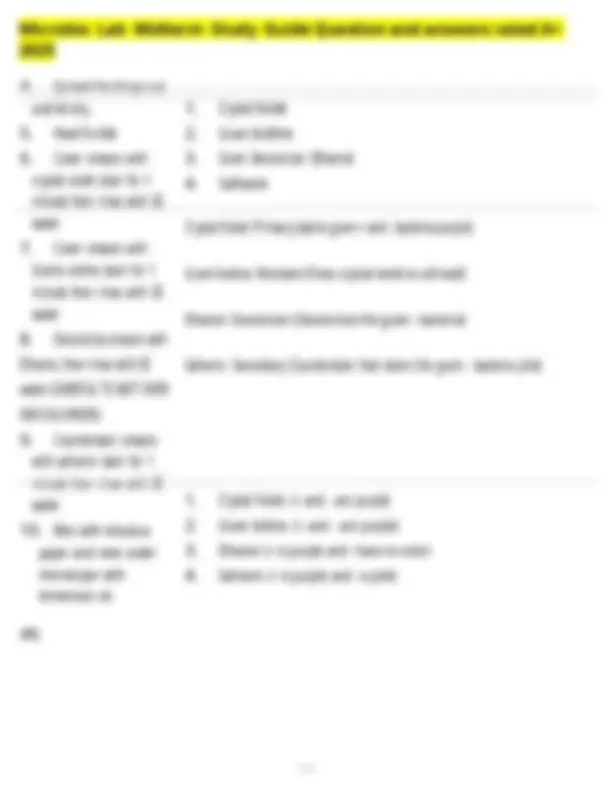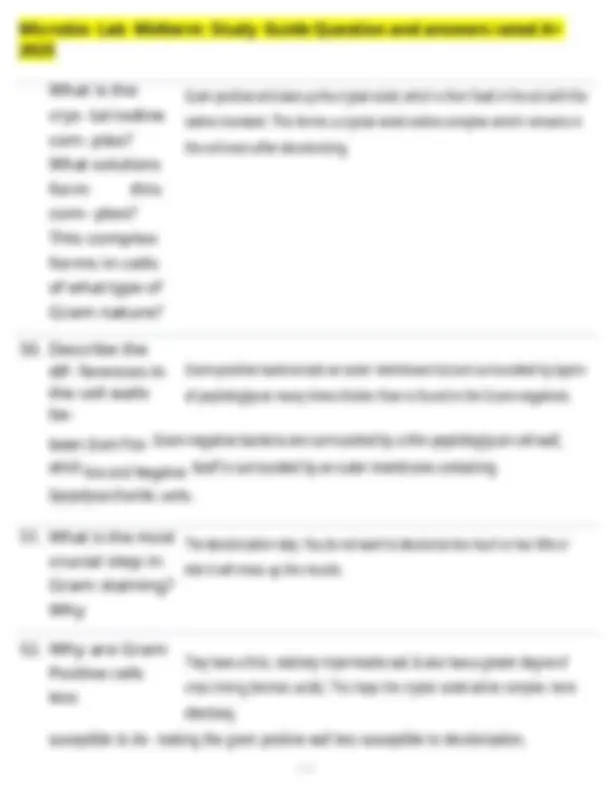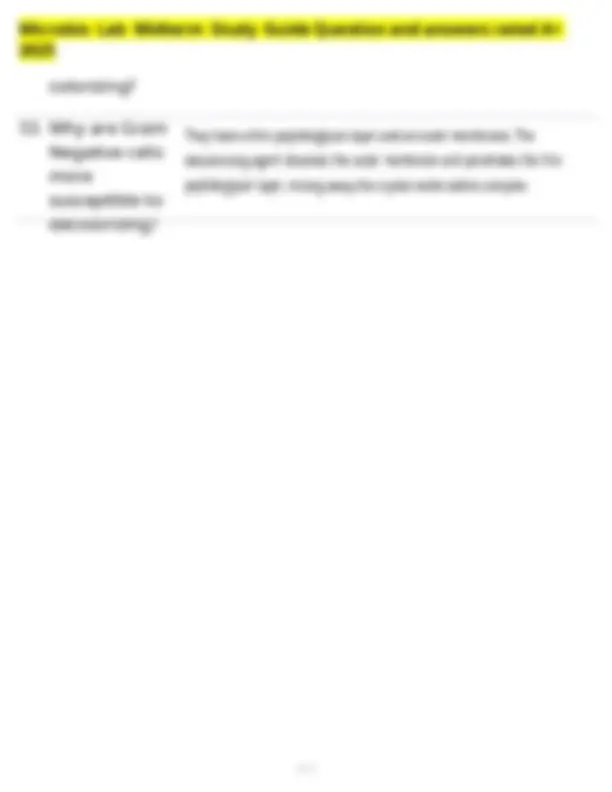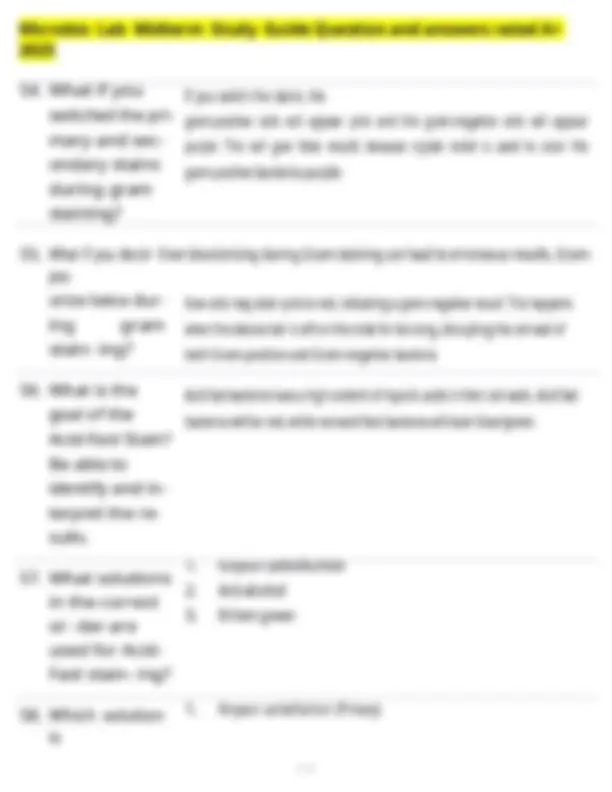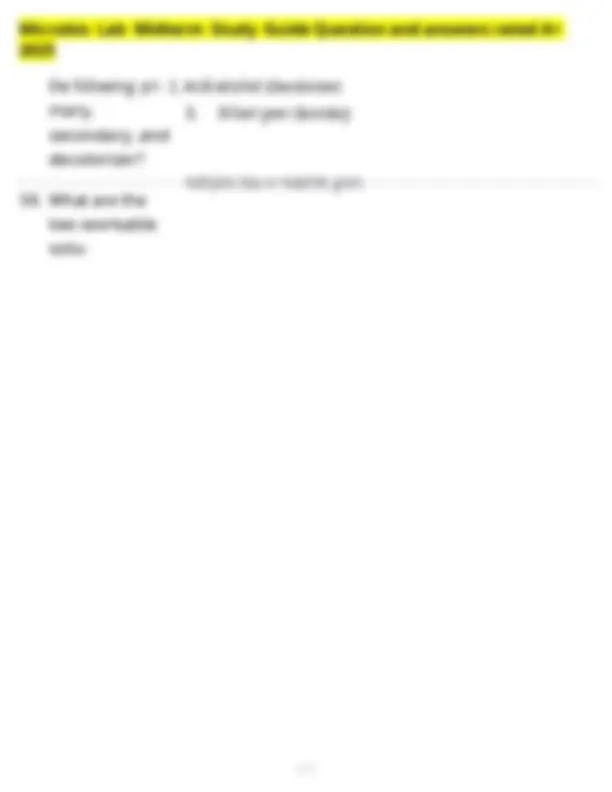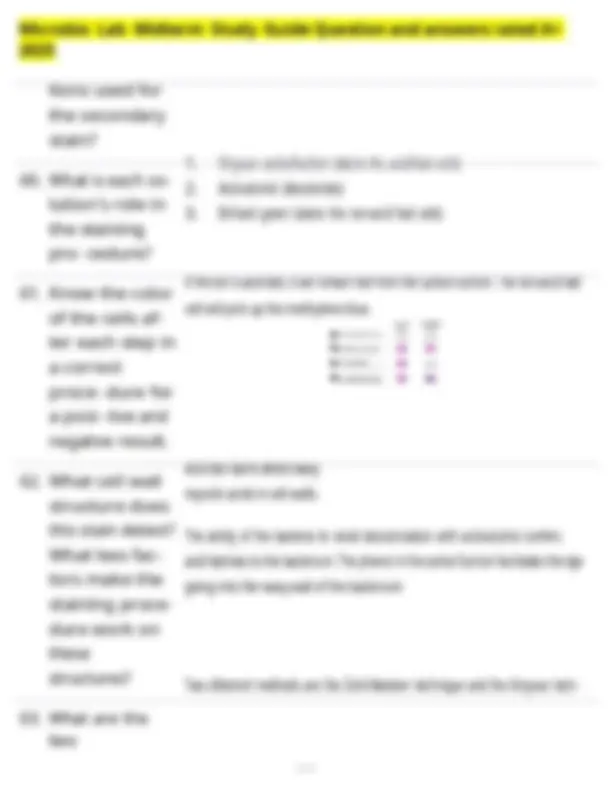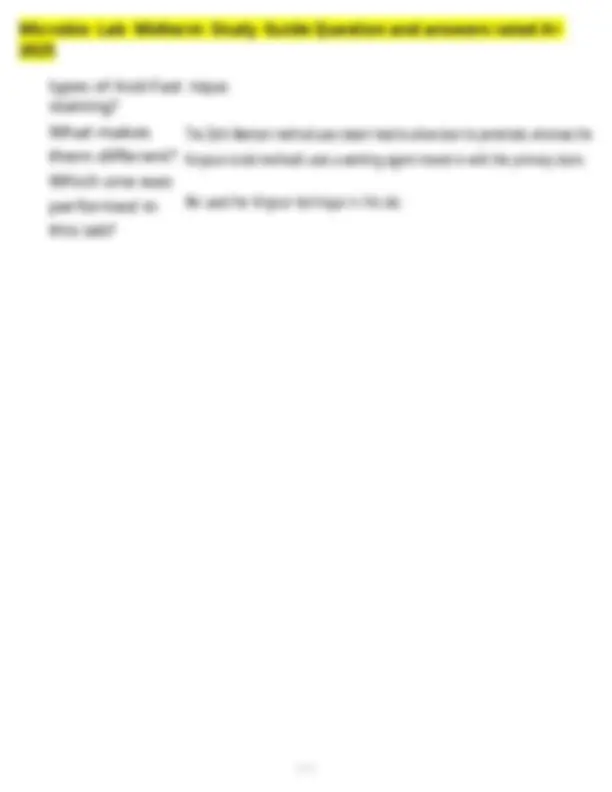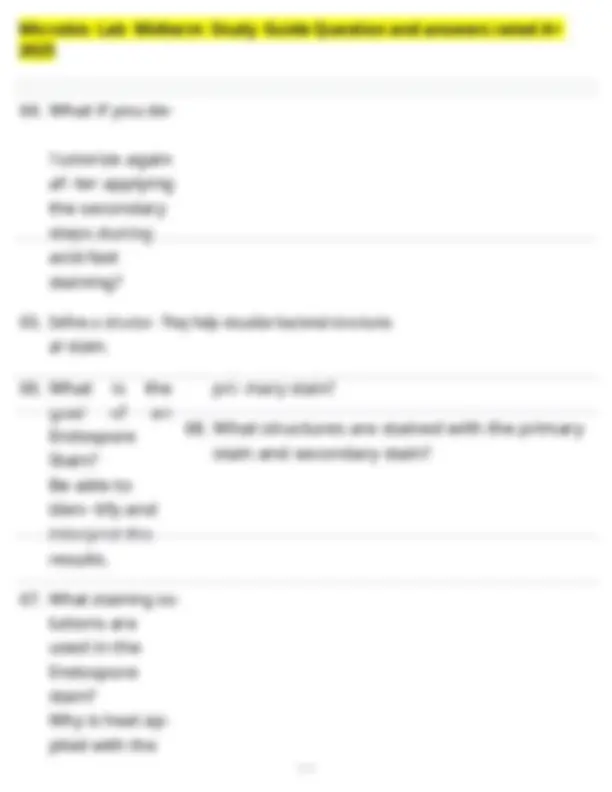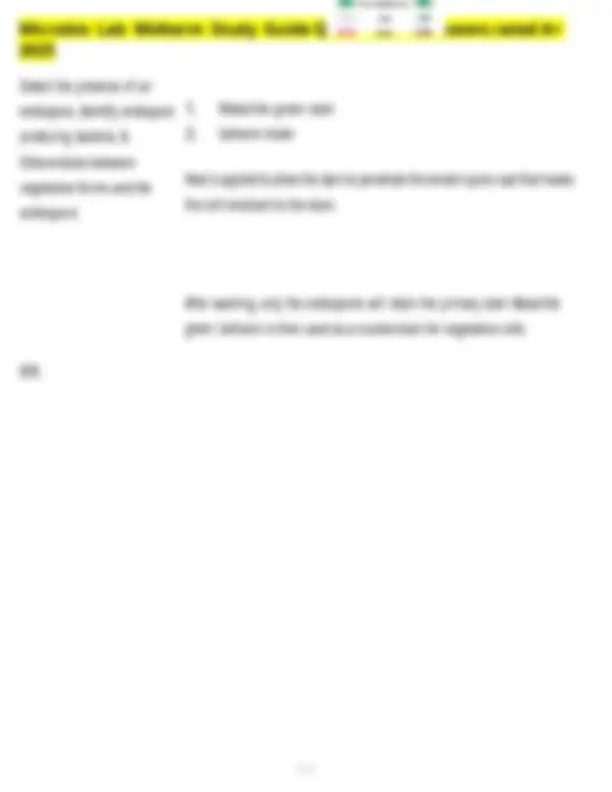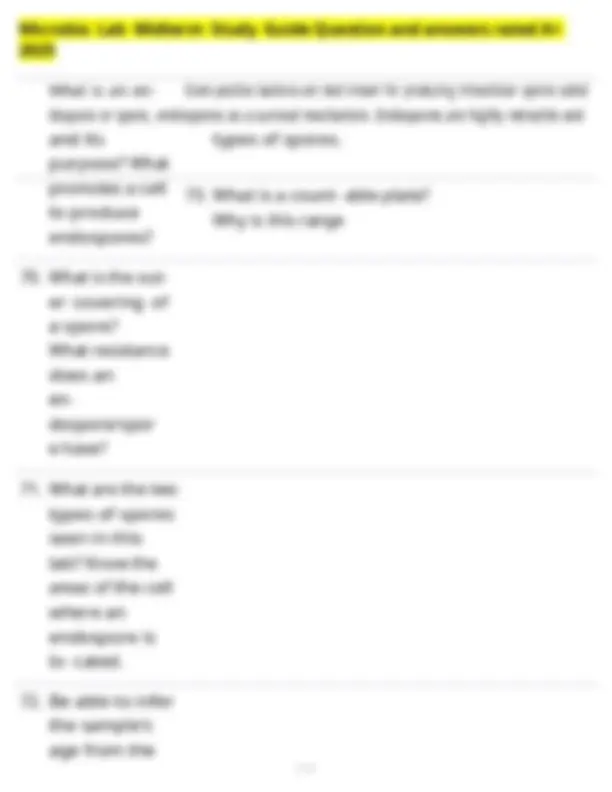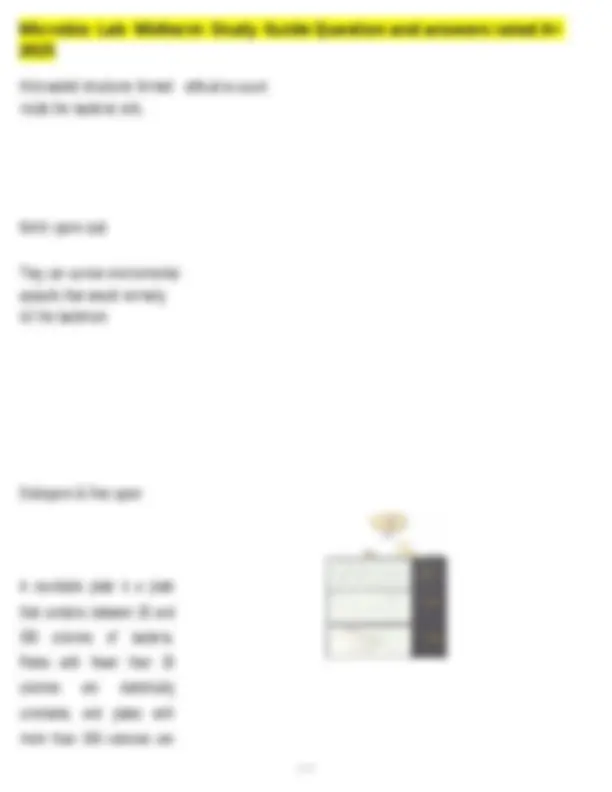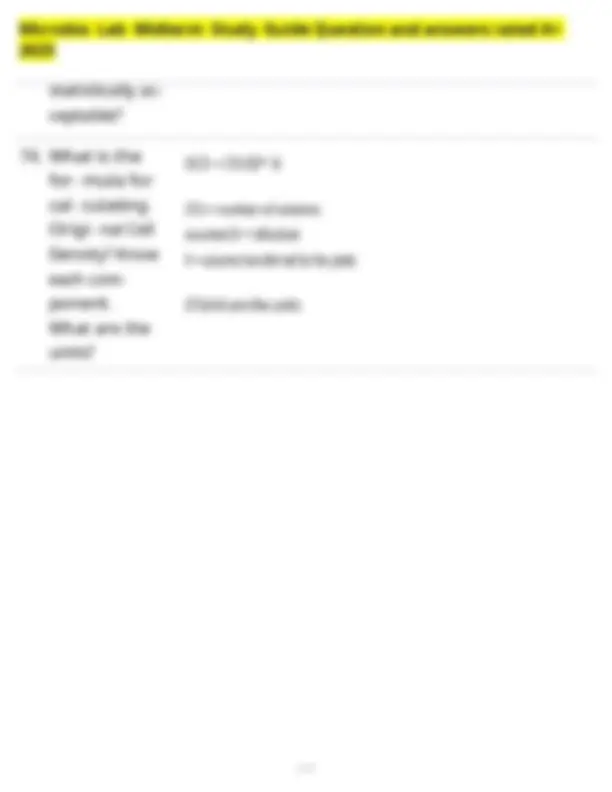Download Microbio Lab Midterm Study Guide Question and answers rated A+ 2025 and more Exams Microbiology in PDF only on Docsity!
- What is aseptic technique?
- Why is aseptic technique neces- sary for this lab?
- When should Eliminating any possibility of intervention of foreign bacteria (contamination) into the media. It is necessary since we are working with live bacteria samples and trying to define the unknown bacteria. It is used when preparing, opening, and transferring bacterial samples to any aseptic technique sterile media. be used?
- What are the proper order of steps needed to perform an asep- tic transfer?
- A Bunsen burner should have how many cones?
- Where is the hottest part of an active Bunsen burner?
- Where and how do you steril- ize an inoculating
- Clean & disinfect counter
- Light bunsen burner
- Keep all media and equipment near the flame
- Flame inoculating loop/needle from the handle to the tip
- Pass the lip of tubes with bacterial or sterile media through the flame before and after inoculating it.
- Use agar plate lids as a shield
- No talking during procedure 2, a light (outer) and dark (inner) blue cone The tip of the inner dark blue cone Flame inoculating loop/needle from the handle to the tip, passing it through the hottest part of flame.
streak pattern be used? density. Quadrant Streaking is used to isolate colonies from samples which may be of high cell density.
- What is consid- ered a successful quadrant streak? What errors can occur?
- What is the main difference between spread plates and streak plating besides the technique? How are they sim- ilar?
- What tool is used for spread plat- ing? How is this tool sterilized?
- What does ubiq- uity mean? There will be growth in decreasing density from Quadrant 1 through Quadrant 4, with Quadrant 4 having isolated colonies. Errors that could occur include, contamination (mold growth) or no growth on the plate from the loop being too hot. Streak plating isolates and purifies a specific bacterium. Spread plating enumer- ates bacteria in a sample. Both are microbial techniques used to isolate bacteria from a mixture. Both tech- niques allow for the dilution of the sample prior to inoculation A bent glass rod is used for Spread plating. It is sterilized by placing it in a jar with isopropyl alcohol. Something that appears everywhere
Define pathogen- ic microorgan- isms
- Define nonpath- ogenic microor- ganisms
- Define opportunistic pathogens microorganism s
- Define commen- sals microorgan- isms
- Define mutualis- tic microorgan- isms.
- What determines colony morphol- ogy? What influences colony morphol- ogy?
- What are the six categories of colony morphol- ogy?
Organisms that do not cause disease, harm, or death to another organism Organisms that are usually non-pathogenic, but can become pathogenic under certain circumstances. Microbes that live on the human body's surfaces or mucosa without harming human health Organisms that interact with other species in a way that benefits both Determined by the shape, size, and pigmentation of a colony. Influenced by culture conditions, bacterial species, environmental variables, etc.
- Shape
- Elevation
- Texture
- Color
specimen, and how the light leaving the specimen is processed. Use the coarse focus knob to bring the object into focus Use the fine focus knob to make the finer details of the specimen visible Adjust the distance between the eyepieces until you can see the sample clearly with both eyes simultaneously Adjust the objective lens to the desired magnificati on objective (4, 10, 40, 100x) x ocular (10x) = (40,100,400,1000x) Eukaryotes- Eukarya Prokaryotes- Bacteria & Archaea
domains, respec- tively?
- What are the two common differ- ences between eukaryotes and prokaryotes?
- What are the materials need- ed for the wet mount and hang- Prokaryotes are always unicellular, while eukaryotes are often multi-celled organ- isms microscope slides depression slides coverslips micropipettes ing drop prepara- petroleum jelly tion?
- What do both the wet mount and hanging drop prepara- tions have in common?
- What is the most significant differ-
Brownian mo- tion. True^ motility^ is^ the^ deliberate,^ self-propelled^ movement^ of^ an^ organism^ using its own features.
- What is chro- mogen, chro- mophore, and auxochrome ?
- What are basic stains? What are some common basic stains?
- What does heat fixing do (3 things)? How do you heat-fix glass slides?
- What is the dif- ference between cell morphology and colony mor- phology?
- What are the two most com-
A Chromogen is a colored molecule. A Chromogen is made up of a chromophore and an auxochrome. Auxochrome ionizes the chromogen, gives it a charge. Chromopho re is the molecule that gives color Basic stains are attracted to negatively charged molecules in cells. Basic stains include methylene blue, crystal violet, malachite green, basic fuchsin, carbolfuchsin, and safranin.
- Kill the bacteria
- Adhere the smear to the slide
- Allow the smear to be stained
- Air-dry the smear.
- Hold the slide at one end and pass the entire slide through the flame of a Bunsen burner two to three times with the smear-side up. cell morphology is the shape and characteristics of the cell under a microscope. colony morphology is the shape and characteristics of the colonies on a plate. cocci & bacilli
bacillus (singular), diplobacillus, streptobacillus, and palisades. coccus (singular), diplococcus, streptococcus, tetrad, and staphylococcus Procedure that uses more than one chemical stain to ditterentiate between ditter- ent types of microorganisms To be able to determine the composition of the cell wall. The advantage of this staining procedure is that those cells that decolorize can be ditteretiated from the cells that resist decolorization by alcohol. If the bacteria stays purple, they are Gram-positive. If the bacteria turns pink or red, they are Gram-negative. Following aseptic technique:
- Get slide and clean it
- Place 3 SMALL drops of water on slide
- Add bacterial samples & control samples to the water drops on the slide. (ONLY NEED A SMALL AMOUNT OF SAMPLE)
- You want the smear to be as thin and even as possible-
- What solutions in the correct or- der are used for Gram staining?
- Which solution is the following: primary stain, secondary stain, mordant, and de- colorizer? What is each so- lution's role in the Gram stain- ing procedure?
- Know the col- or of the cells after each step in a correct pro- cedure for both Gram natures.
What is the crys- tal-iodine com- plex? What solutions form this com- plex? This complex forms in cells of what type of Gram nature?
- Describe the dif- ferences in the cell walls be- Gram positive cells take up the crystal violet, which is then fixed in the cell with the iodine mordant. This forms a crystal-violet iodine complex which remains in the cell even after decolorizing. Gram-positive bacteria lack an outer membrane but are surrounded by layers of peptidoglycan many times thicker than is found in the Gram-negatives. tween Gram Posi- Gram-negative^ bacteria^ are^ surrounded^ by^ a^ thin^ peptidoglycan^ cell^ wall, which (^) tive and Negative itself is surrounded by an outer membrane containing lipopolysaccharide. cells.
- What is the most crucial step in Gram staining? Why
- Why are Gram Positive cells less The decolorization step. You do not want to decolorize too much or too little or else it will mess up the results. They have a thick, relatively impermeable wall. & also have a greater degree of cross linking (teichoic acids). This traps the crystal violet-iodine complex more ettectively, susceptible to de- making the gram positive wall less susceptible to decolorization.
colorizing?
- Why are Gram Negative cells more susceptible to decolorizing? They have a thin peptidoglycan layer and an outer membrane. The decolorizing agent dissolves the outer membrane and penetrates the thin peptidoglycan layer, rinsing away the crystal violet-iodine complex

